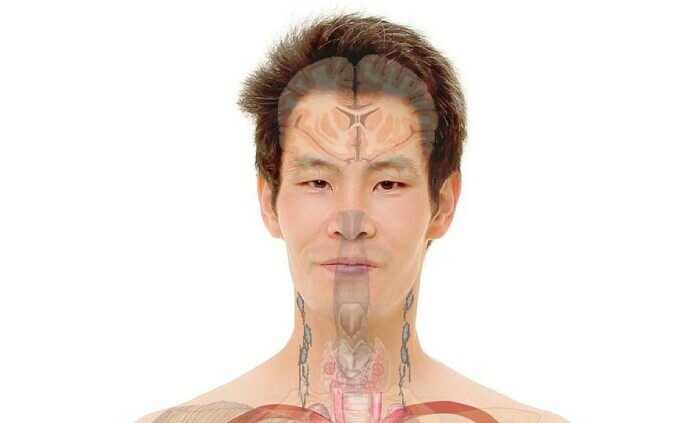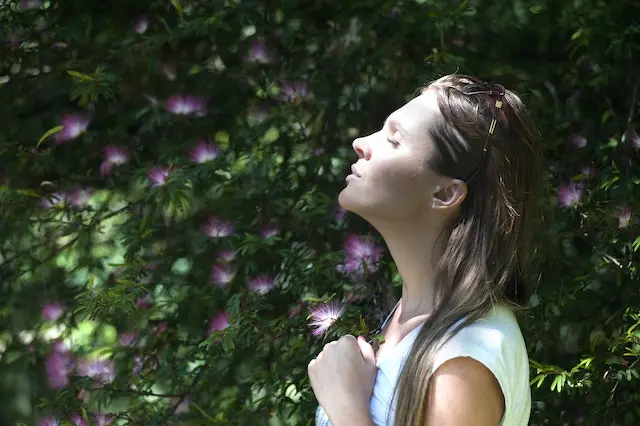Mindfulness Techniques For Mental Detox
I’m going to kick things off by talking about mindfulness and its role in achieving mental clarity. Now, mindfulness is essentially about being present and fully engaged with the here and now. What’s interesting is, that it’s not just about being aware of your surroundings; it’s also about inward focus, which brings us to the idea of a mental detox.
Mental detox isn’t just a buzzword. It’s about clearing out the mental clutter that bogs down our thoughts and emotions, recalibrating our mental state, so to speak. Think about this: just as detoxifying the body can lead to improved health, a mental detox can pave the way for better mental and emotional well-being.
You’re going to find out about how mindfulness techniques, which range from simple breathing exercises to structured meditative practices, can help you sweep away the cobwebs of stress, anxiety, and endless mental chatter. It’s a tool that can buffer you against the daily grind and leave you with a cleaner, sharper mind.
Achieving a mental detox through mindfulness is akin to pressing the refresh button on your browser. It gives you a chance to step back, assess, and then move forward with clarity. As we explore mindfulness techniques in-depth, you’ll see how interlinked our mental and emotional states are with our physical health, which is where the mind-body connection comes into play.
And that’s going to include looking at some fascinating ways our mental practices affect our physical self. It’s not just an emotional cleanse we’re after – it’s a holistic approach to overall well-being. This understanding of how closely our mind and body are connected sets the perfect stage for diving into the next section, where we’ll explore this relationship in detail.
Understanding the Mind-Body Connection
You’re probably aware that your mind and body are connected, but you might not realize just how closely they influence each other. Learning about this deep connection is vital, especially when we’re talking about mental detox

The mind-body connection is about more than intuition; it’s backed by science. Stress, for instance, can manifest as physical symptoms, while physical ailments can lead to mental distress. Mindfulness serves as a bridge, reinforcing this crucial link.
Now, you might be asking yourself, how does mindfulness do this? It’s through increased awareness. By paying attention to our thoughts and bodily sensations, we start to recognize the early signals of mental clutter and stress.
Engaging in mindfulness can be as simple as noticing the rhythm of your breathing or the tension in your muscles. This awareness encourages a mental pause, which can often be the first step in a mental detox.
To complement mindfulness practices, certain physical exercises can also be incorporated. Gentle activities such as yoga or tai chi are known for their mental health benefits. They sync movement and breath, amplifying mindfulness and aiding in the release of pent-up stress.
By intentionally nurturing our mind-body connection through mindfulness, we set the stage for an effective mental detox. We’ll be better prepared to proceed to the next stage of our mental wellness journey: mastering breathwork.
Breathwork is another element of mindfulness and a powerful tool in mental detox. I’m going to walk you through this fundamental technique in the next section. You’ll find out how a practice as simple as breathing can have a profound impact on clearing your mind.
Breathwork: A Fundamental Mindfulness Technique
Now, let’s talk about breathwork. It’s not just about taking a deep breath when you’re stressed – it goes much deeper than that. Breathwork is a powerful tool in the mindfulness arsenal, tapping into the profound connection between your breath and your mental state.

Understanding the ins and outs of breathwork is going to be a game-changer. Scientific research shows that controlled breathing can lower stress hormones, release tension, and even improve conditions such as anxiety and depression. But how does this actually work? When you focus on your breathing, you’re essentially directing your attention away from the ‘noise’ in your head and bringing your body back to the present moment. It’s like hitting the reset button on your brain.
Getting started with mindfulness breathwork might be easier than you think. The goal is to be intentional with your breath. I’m going to walk you through a simple technique that you can practice right now. Sit comfortably, inhale slowly through your nose, hold that breath for a few seconds, and then exhale gently through your mouth. It’s important to focus on each phase of the breath cycle as you do this.
Making a habit of this practice won’t just benefit you during meditation sessions; it can be a lifeline in day-to-day situations. Whether it’s before a big meeting or right after a heated discussion, a few minutes of controlled breathing can restore a sense of calm. I recommend setting aside specific times during the day for breathwork. This helps to develop a routine and ensures that you’re giving yourself a mental ‘check-in’.
As you get more comfortable with breathwork, you’re going to find it easier to handle stress and maintain mental clarity throughout your day. Remember, consistent practice is key – your first attempt doesn’t need to be your last. You can always adjust your approach down the road.
But breathwork isn’t the only mindfulness practice that can make a significant impact on your mental detox journey. Meditation, which I’ll cover in the next section, complements breathwork by assisting you in cultivating an even deeper sense of inner calm. Choose something that resonates with you, because the combination of these practices will bolster your ability to thrive in a hectic world.
Mindful Meditation: Cultivating an Inner Space of Calm
I’m going to guide you through the oasis of calm that resides within you, waiting to be discovered through mindful meditation. If you’ve ever wondered if you can find a moment of peace in the chaos of daily life, guess what? You can.

Mindful meditation is a technique that invites you to focus on the present moment, without judgment. It’s not just about relaxation; it’s also about awakening to the richness of the now. Let me share with you a variety of techniques, so you can choose something that resonates with you.
You’re going to find out about seated meditation, which involves sitting in a peaceful spot and paying attention to your breath, body, thoughts, feelings, or perhaps a mantra. There’s also walking meditation, where mindfulness is achieved by focusing on the movement and sensation of walking.
Your meditation space is vital. It should be a quiet area where interruptions are minimized. A comfortable cushion or chair can make a difference, as can dim lighting or candles. If you want to incorporate sound, consider gentle music or a soothing sound app.
Now, if you’re just starting, don’t worry too much about mastering the practice overnight. A few minutes a day can make a significant difference, and you can always adjust your approach down the road. Consistency is key.
Choose a specific time for your meditation practice, like early morning or before bedtime. But remember, your first attempt doesn’t need to be your last. Feel free to experiment with what works best for you and adjust as necessary.
Embracing Mindfulness as a Habit
You’ve already learned some powerful techniques to kickstart your mental detox journey. Now, I’m here to help you wrap things up and set you on a path of continued mindfulness practice. It’s not just about what you’ve learned; it’s how you apply it consistently that counts.
The true transformative power of mindfulness unfolds through regular, deliberate practice. It’s like watering a garden; you can’t just water it once and expect it to flourish forever. Integrating these mindfulness methods into your daily life can significantly enhance your mental clarity and overall well-being.
If you want to reap the full benefits, choose something that resonates with you. Whether it’s your morning breathwork routine, a meditation session before bed, or mindful moments throughout your day, your practice should be something you look forward to, not a chore.
Remember, your first attempt at mindfulness doesn’t need to be your last. You can always adjust your approach down the road, experimenting with different techniques to find what truly works for you. Don’t worry too much about perfection; the goal is progress and growing awareness.
Mindfulness in Action: Everyday Applications for a Calmer You
Remember that feeling of serenity after a perfectly timed deep breath? Imagine weaving that same sense of calm into the very fabric of your day. Mindfulness isn’t just about designated meditation sessions; it’s about infusing present-moment awareness into your daily routine, creating micro-moments of peace amidst the hustle.
Start your day on a mindful note. Instead of hitting snooze in autopilot, take a few minutes for breathwork. Inhale deeply, feeling the air fill your lungs, and exhale slowly, releasing any lingering tension. This simple practice sets the tone for a calmer, more centered day.
Extend the mindfulness to your morning routine. As you brush your teeth, notice the coolness of the water, the taste of the toothpaste, the sensation of the bristles. Bring the same awareness to your breakfast, savoring each bite, appreciating the textures and flavors. It’s a small shift, but it grounds you in the present moment and sets the pace for mindful eating throughout the day.
Your commute can be a mindfulness haven too. Instead of getting lost in the noise of traffic, tune into your senses. Feel the rhythm of your walk, the rumble of the train beneath your feet. Notice the changing scenery, the sounds of birds chirping, the warmth of the sun on your skin. These small observations break the autopilot and bring a sense of calm amidst the rush.
Mindfulness isn’t just about solitude; it can enhance your interactions too. When engaging in conversations, be fully present. Listen attentively, without interrupting or forming judgments. Acknowledge the other person’s words with a nod or a smile, and respond thoughtfully. This mindful communication fosters deeper connections and creates a more peaceful atmosphere.
Remember, mindfulness isn’t about perfection; it’s about progress. Start small, with one mindful moment a day, and gradually weave it into your routine. You might be surprised how these tiny pockets of peace transform your day-to-day experience, leaving you feeling calmer, clearer, and more connected to yourself and the world around you.
Conclusion: Your Mindful Journey Begins Now
I truly hope that you embrace mindfulness as part of your lifestyle, because it’s not just a trend – it’s a powerful tool for transformation. You’ve explored the foundations, delved into techniques, and discovered the potential for everyday applications. Now, the journey truly begins.
Think of your mind as a beautiful garden. Seeds of mindfulness have been sown, techniques learned like nurturing tools. But the garden won’t flourish overnight. It requires consistent care, gentle attention, and a willingness to experiment. Embrace the process. Some days, your garden will bloom vibrantly, others may seem quiet. That’s okay. Be patient, be kind to yourself, and celebrate every mindful moment, big or small.
Remember, this isn’t about achieving perfection. It’s about progress. Start small, integrate what resonates, and adjust your practice as needed. Every mindful breath, every present-moment awareness, is a step towards a calmer, clearer, and more connected you.
So, step into your garden, nurture those seeds, and watch your world transform. One mindful moment at a time, you’ll cultivate an inner peace that radiates outward, enriching every aspect of your life. Embrace the journey, stay curious, and remember – the power to create a calmer, more fulfilling life lies within your grasp. Now go forth and mindfully explore it!




